What Are AI Tools for Teachers? Understanding Their Role in Modern Classrooms
Teachers, get ready; artificial intelligence is here to stay and is ruining the classroom celebration! AI tools for teachers are like the ideal teaching assistants that never sleep, don’t need coffee, and can produce lesson plans faster than you can say “grading backlog.” These free AI tools for teachers are software or platforms powered by artificial intelligence, designed to simplify tasks like planning lessons, grading papers, giving feedback, and even spotting plagiarism. Imagine them as your digital sidekick assisting you in saving time and concentrating on what actually counts → motivating your pupils.
The part artificial intelligence in education in 2025 is bigger than before. From automating mundane chores to customizing education for every student, these tools are changing schools all around the United States, United Kingdom, Singapore, Canada, China, Russia, and Colombia. Whether you are a tech novice or a seasoned expert, knowing how these best AI tools for teachers operate is the first step to improving your teaching performance. Let’s analyze it.
Artificial intelligence is changing education in remarkable ways.
Like a snow globe in a toddler’s hands, artificial intelligence is revolutionizing education; everything is shifting and it’s thrilling!
So, how exactly is AI turning the script on education? For starters, it’s automating the boring stuff. Teachers no longer have to spend hours constructing free AI tools for teachers lesson plans from scratch—AI can build them depending on your curriculum, student needs, and even local standards. In the US, tools like ChatGPT and Google’s AI experiments are helping teachers integrate lessons with Common Core, while in Singapore, AI is adapting content to fast-paced STEM curriculums.
Then there’s the worldwide reach. AI tools are breaking language boundaries, translating lectures in real-time for multinational classes in Colombia or Russia. They’re also gamifying learning—turning math into a space adventure or history into a treasure hunt. The result? Students are more engaged, teachers are less anxious, and classrooms are bustling with enthusiasm.
The stats back this up. A 2024 survey indicated that 68% of teachers employing AI tools reported better efficiency, while 54% stated their students were more motivated. Free AI tools for teachers are leveling the playing field, providing instructors in poor schools the same firepower as those in affluent districts. It’s not simply a trend—it’s a movement.
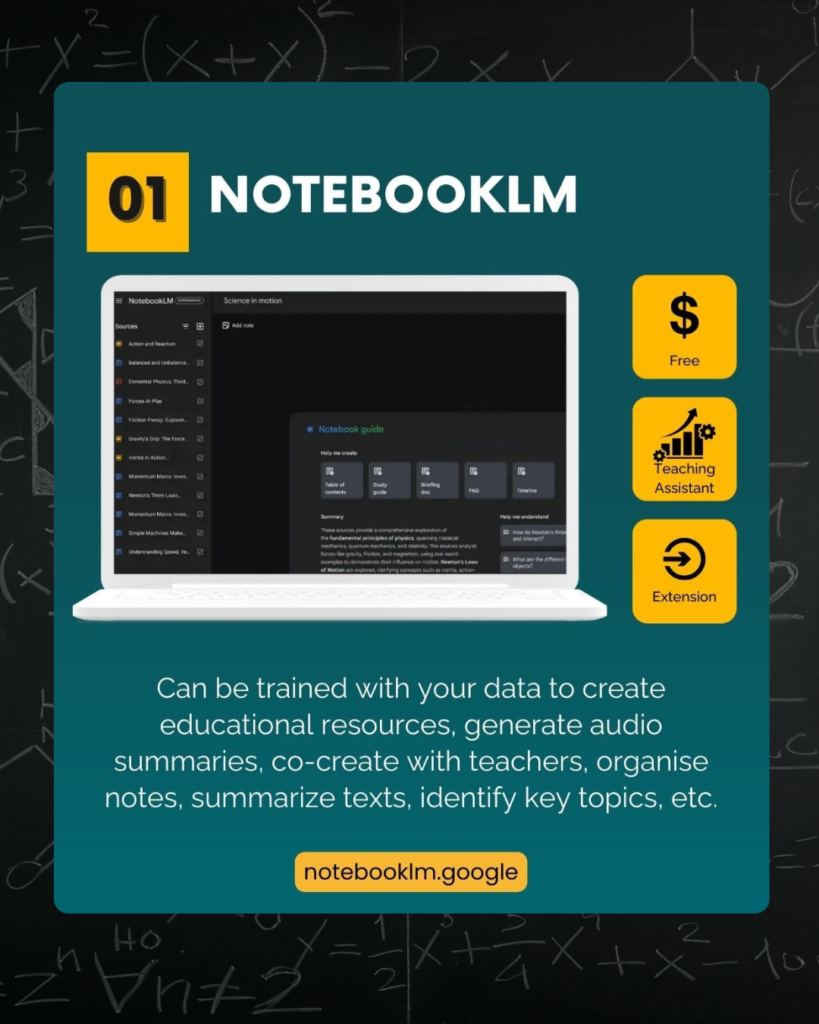
Why Teachers Should Use AI Tools
- First, time. Teachers spend an average of 12 hours a week on lesson planning alone—time you could spend binge-watching Netflix or, you know, sleeping. Free AI tools for teachers lesson plans can cut that down to an hour or two. Tools like MagicSchool.ai or LessonBud churn out full plans, worksheets, and even quiz questions in minutes. More time for you, less time for stress.
- Second, consistency. Ever forget to include that one vocab phrase in your lecture, only to discover it mid-class? AI doesn’t forget. It’s like a robot secretary that keeps your lessons tight and connected with your goals. For special ed teachers, AI technologies for special education teachers can alter curriculum for IEPs (Individualized Education Plans) without you breaking a sweat.
- Third, feedback. Grading 30 essays by hand is soul-crushing. AI feedback systems for teachers—like Grammarly for Education or Turnitin’s AI grading—can discover errors, propose fixes, and even score papers based on rubrics. You just sip your coffee and analyze the results. In a 2024 study, 73% of teachers utilizing AI grading reported it decreased their workload by at least 30%.
- Fourth, catching cheats. With students getting clever utilizing AI to compose essays, you need an AI detection tool for professors to fight fire with fire. Tools like GPTZero or Copyleaks can spot out AI-generated work, keeping your classroom honest.
- Finally, it’s free (sometimes)! Free AI solutions for schools like Canva’s Magic Write or QuillBot don’t cost a thing yet provide big. Even expensive tools typically offer free tiers that deliver a punch. Why wouldn’t you use a technology that’s basically a genie granting your teaching wishes?
Teachers, say goodbye to late-night lesson planning and hello to AI—your new BFF who never sleeps!
Best AI Lesson Planning Tools for Teachers
Top AI Lesson Generators for Teachers
- MagicSchool.ai → This gem is a popular favorite for free AI tools for teachers lesson plans. Input your grade level, subject, and topic—say, “5th-grade science, ecosystems”—and bam, it spits out an entire lesson plan with objectives, activities, and assessments. It even aligns with standards like NGSS or Common Core for US instructors. Bonus → It’s got a free tier that’s crammed with features.
- LessonBud → New to the scene , LessonBud employs AI to develop engaging lesson plans in under five minutes. Want a history lesson on the Russian Revolution for your Moscow classroom? It’ll toss in discussion suggestions, a timeline activity, and a quiz. The free version covers essential subjects, appropriate for budget-conscious teachers in Colombia or Canada.
- Eduaide → This one’s a powerhouse for top AI tools for teachers. Eduaide doesn’t simply organize lessons—it provides worksheets, rubrics, and even parent newsletters. Teachers in Singapore adore it for its STEM concentration, while UK educators utilize it to match GCSE criteria. The free plan provides you 10 lesson generations a month—plenty to get started.
- TeachFX → While it’s recognized for feedback, TeachFX launched out a lesson-planning component. It assesses your teaching style (via recorded lessons) and provides strategies that fit your vibe. It’s a bit expensive, but the free trial is a wonderful test run for teachers in China or the US.
- Curipod → Gamification meets lesson planning! Curipod’s AI develops interactive slides with polls, quizzes, and games. Picture this → a geography lecture for your Singapore kids with a virtual treasure hunt. The free version is robust, making it a hit across all seven target countries.
These tools save hours. A assessment revealed that teachers utilizing AI lesson generators saved planning time by 60%, giving more freedom for creativity—or a nap. They’re also versatile, letting you adjust programs for special ed children or bilingual classrooms. Need a lesson on fractions for a special needs class in Canada? AI technologies for special education teachers like MagicSchool.ai can modify the speed and add visuals in a second.
| Tool Name | Purpose | Key Features |
|---|---|---|
| MagicSchool AI | Curriculum design | Customization, Standards alignment |
| ChatGPT | Idea generation | Flexible, Creative teaching |
| Quizizz | Interactive assessments | Gamified learning |
| ClickUp | Task management | Collaboration, Content creation |
| LessonPlans.ai | Standards-aligned curriculum | Assessment integration |
| Curipod | Project-based learning | Interactive lesson design |
| Eduaide.AI | Real-time lesson adaptation | Student response analysis |
| Planboard | Lesson organization | Standards tracking |
AI vs Traditional Lesson Planning
Let’s put AI and traditional lesson preparation in the ring and see who comes out on top. Traditional planning—scribbling notes, browsing through textbooks, and praying your printer doesn’t jam—has its appeal, but it’s slow. AI? It’s like traditional planning on steroids.
- Speed → Traditional planning takes hours. A teacher in the UK would spend a weekend prepping a week of English classes, seeking for resources and aligning with standards. With free AI tools for teachers lesson plans, that same week’s worth of lessons takes 20 minutes. MagicSchool.ai, for example, develops a plan in seconds—objectives, activities, and all.
- Customization → Old-school ways mean you’re the customization engine. Want to customize a lesson for a special ed kid in Russia? You’re rewriting by hand. AI tools for special education teachers flip that script—input the student’s needs, and the technology adjusts automatically. Eduaide can even offer adjustments like extra visuals or simplified text.
- Resources → Traditional planning puts you on a scavenger search for worksheets or movies. AI solutions like LessonBud combine everything—handouts, links, even Kahoot-style quizzes. For a science teacher in Colombia, that means less time Googling and more time teaching.
- Consistency → Ever realize mid-lesson you forgot a critical point? Traditional plans rely on your memory. AI doesn’t miss a beat—it’s trained to cover all bases. TeachFX even reminds you to incorporate discussion time based on your past classes.
- Cost → Here’s the kicker—traditional planning is “free” but eats your time (and sanity). Free AI tools for teachers like Curipod provide you pro-level plans without the price tag. Even paid levels are cheaper than hiring a sub when you burn out.
The downside? AI isn’t flawless. It can overlook your classroom’s distinctive feel or local context—like a festival in Singapore your kids enjoy. You’ll still need to tweak outputs. But 9 times out of 10, AI wins for speed, scale, and sanity-saving. A 2024 survey indicated 82% of instructors liked AI planning after they tried it. Ready to quit the old ways?
Lesson planning just got a glow-up—AI’s here to make you the coolest teacher on the block!
AI-Powered Grading and Feedback Tools→ Which One Saves the Most Time?
In this part, we’ll dissect how AI grading works, feature the finest AI feedback tools for teachers, and (imagine it!) toss in a table comparing the top selections. Say goodbye to red pen tiredness and hello to efficiency—let’s dig in!
| Tool Name | Purpose | Key Features | Time-Saving Aspects |
|---|---|---|---|
| Gradescope | Assignment grading | AI-assisted grouping, Analytics | Bulk grading, Fast feedback |
| Edcafe AI | Interactive grading | Custom rubrics, AI feedback | Streamlined customization |
| CoGrader | Essay grading | AI-generated comments, Rubrics | Automated essay evaluation |
| Coursebox | All-in-one grading platform | AI assessments, Rubric support | Integrated grading workflows |
How AI Grading Works
AI grading might sound like sci-fi, but it’s real, and it’s spectacular. So, how does this wizardry happen? At its foundation, AI grading uses natural language processing (NLP) and machine learning to analyze student work. It’s like having a robot TA who’s obsessed with perfection—and never complains about late nights.
But it’s not just about scores. AI also creates feedback—specific, actionable remarks like “Great use of examples, but add more analysis.” For special ed children in Colombia, AI tools for special education teachers can alter feedback to match IEPs, keeping it simple or thorough as needed. And for multinational classes in the UK, some systems convert comments into languages like Spanish or Mandarin.
Top AI Tools for Teachers for Automated Feedback
- Gradescope → A major hitter for AI feedback solutions for teachers, Gradescope handles everything from essays to exams. Upload a PDF, set your criteria, and watch it evaluate 50 papers in under 10 minutes. Teachers in the US adore it for STEM subjects—think chemical diagrams or math proofs. The free tier is limited, but the paid plan (beginning at $1 per student) is worth it for big classes.
- Turnitin Feedback Studio → Known for plagiarism checks, Turnitin’s AI now gives grading and feedback too. It’s great for English teachers in Canada or Singapore, spotting grammar mistakes and offering changes. The free version is basic, but schools typically bundle it in subscriptions—check with your admin!
- Grammarly for Education → This free AI tool for instructors is a feedback powerhouse. It’s not full-on grading, but it detects errors, enhances readability, and even checks tone in student work. UK teachers use it to refine essays, while special ed teachers in Russia adapt it for simpler feedback. The free plan rocks; the premium ($12/month) adds plagiarism detection.
- Formative → This one’s a hidden treasure among free AI tools for teachers. Upload quizzes or short answers, and Formative’s AI scores them while suggesting comments like “Try explaining this in more detail.” It’s big in Colombia for rapid formative assessments. The free version covers most purposes; premium includes analytics.
- Crowdmark → Popular in Canada and the US, Crowdmark’s AI grades handwritten or digital work. Scan those algebra tests, and it’ll score them based on your key. Feedback is basic but fast—ideal for math teachers in China. Free trials are available; full access starts at $20/year per teacher.
These tools shine for speed and scale. A 2024 survey indicated 67% of teachers utilizing AI feedback solutions for teachers felt their remarks were more consistent than manual grading. Plus, they’re a lifesaver for big classes—imagine marking 100 papers in an hour instead of a week. Pair these with an AI detection tool for teachers like GPTZero to discover sly AI-written entries, and you’re golden.
Grading just got an AI upgrade—now you can mark papers faster than a kid can say “I forgot my homework!”
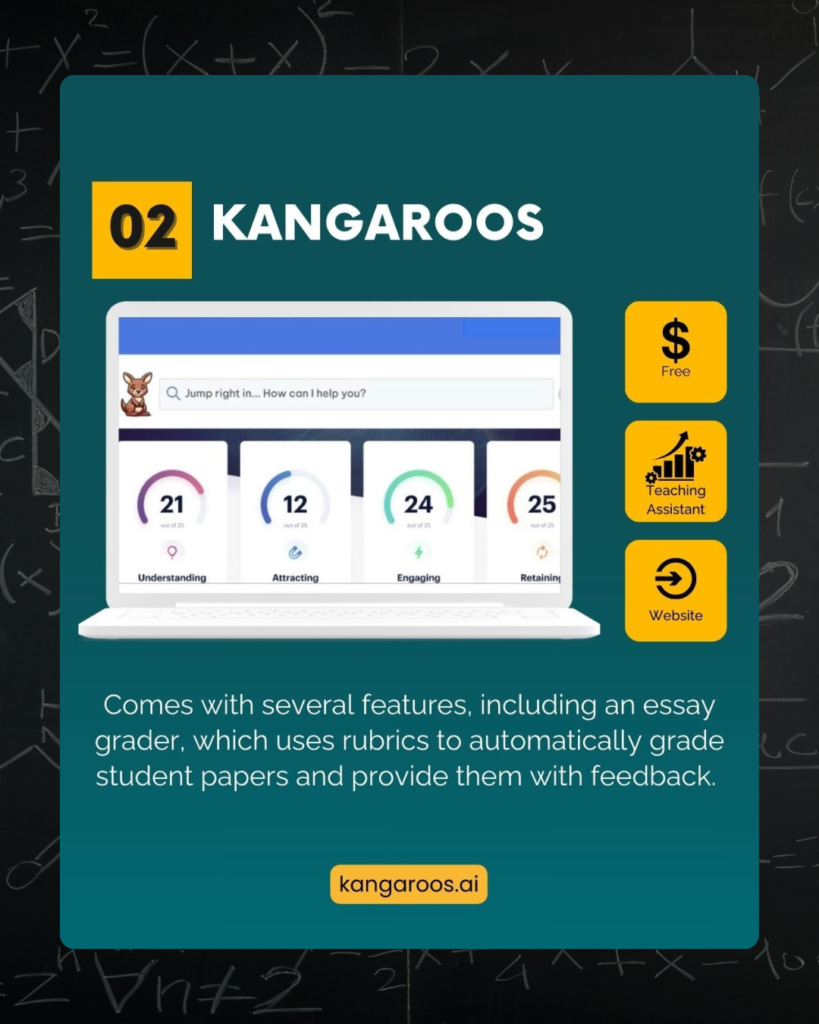
AI Writing Assistants for Teachers→ Automate Lesson Notes & Emails
Writing lesson notes, emails to parents, or that dreadful newsletter—ugh, it’s like homework for instructors. But guess what? AI writing assistants are come to remove that strain off your shoulders. These free AI tools for teachers are like having a wordsmith on fast dial, churning out flawless language while you sip your coffee. From lesson summaries to professional emails, they’re the secret weapon every teacher needs in 2025.
We’ll investigate the finest AI writing aides for educators and show you how to use them for quick lesson recaps. Whether you’re in Singapore producing a STEM report or in Russia crafting a parent update, these tools will make you sound like a pro in half the time. Let’s get writing!
Best AI Writing Assistants for Educators
AI writing helpers are the MVPs of multitasking. They’re fast, they’re clever, and they’re here to make your words glitter. Here’s the breakdown on the top AI tools for teachers that’ll have you writing like a champ.
- Canva Magic Write → Part of Canva’s free suite, Magic Write is a free AI tool for instructors that generates text for lesson notes, posters, or emails. Type “Write a note about fractions for 4th graders,” and it spits out a clear, kid-friendly paragraph. US teachers enjoy it for quick handouts; UK educators pair it with Canva’s creative capabilities. Free tier is solid; premium ($15/month) provides extra features.
- QuillBot → This one’s a rewriting magician. Got a rough lesson note? QuillBot polishes it into gold—or simplifies it for special ed children in Colombia. It’s free for basic use, making it a hit for top AI tools for teachers on a budget. Premium ($10/month) unlocks paraphrase capability for lengthier docs.
- ChatGPT (Free Version) → OpenAI’s classic is still a beast. Ask it to compose an email to parents about a field trip, and it’s done in seconds—professional yet friendly. Teachers in Canada use it for newsletters; in China, it’s a go-to for quick translations. The free version does most jobs; GPT-4o (paid) is overkill for fundamentals.
- Jasper → A premium pick, Jasper shines for longer tasks like unit plans or grant bids. It’s not free ($39/month), but the 7-day trial lets you test it. Singapore teachers swear by it for thorough STEM notes; US educators utilize it for admin tasks.
- Rytr → Affordable and great, Rytr’s free plan allows you 10,000 characters a month—enough for emails and short notes. Input “Email to parents about homework,” and it delivers. Russia’s teachers use it for bilingual drafting; it’s a steal at $9/month for unlimited access.
How to Use AI for Quick Lesson Summaries
- Pick Your Tool → Start with ChatGPT or Canva Magic Write—both free and user-friendly. For a specific ed adjustment, QuillBot’s your pal.
- Input the Basics → Tell the AI what you taught. Example → “Summarize a 6th-grade science lesson on photosynthesis.” Be specific—add the grade, subject, and essential points like “plants, sunlight, oxygen.”
- Let It Rip → Hit enter, and witness the magic. ChatGPT would spit out → “Today, 6th graders learned how plants use sunlight to make food through photosynthesis, turning CO2 into oxygen.” Short, sweet, done.
- Tweak It → Add your flare. Maybe → “Our 6th graders discovered how plants are Earth’s superheroes, using sunlight to whip up food and oxygen!” AI tools for special education teachers can simplify further → “Plants utilize sun to develop and generate air.”
- Batch It → Got a week’s worth of lessons? Feed them all in. Canva Magic Write can churn out five summaries in five minutes—perfect for a newsletter in Singapore or a parent update in the US.
- Share It → Copy-paste into an email, handout, or LMS. Parents in Russia get the update in seconds; kids in Canada review it before the quiz.
Writing woes? AI’s got your back—now you can type less and teach more!
AI Tools for Classroom Engagement→ Gamify Learning with AI
Classroom engagement might feel like herding cats—some days, your students are all in, and others, they’re staring out the window thinking of lunch. Enter AI tools for classroom engagement, the secret ingredient to converting dull classes into amazing adventures! These free AI tools for teachers transform learning into a game, encouraging participation and making your classroom the place to be. Whether you’re teaching in a tech-savvy Singapore school or a rural Colombian community, AI’s got the power to light up those eager faces.
In this part, we’ll feature the top AI tools for interactive learning and examine how AI gamification skyrockets student engagement. From virtual quests to fast surveys, these top AI tools for teachers are your ticket to a livelier classroom. Let’s level up your teaching game!
Top AI Tools for Teachers to Provide Interactive Learning
- Kahoot! (AI-Enhanced) → Kahoot’s been a gamification champ forever, but its today’s AI update takes it to the next level. The AI recommends quiz questions depending on your class topic—type “World War II,” and it delivers multiple-choice gems in seconds. Free for basic use, it’s a hit with teachers in the US and UK for quick, entertaining feedback. Premium ($10/month) adds extra question types.
- Curipod → This gem among free AI tools for teachers lesson plans provides interactive slides with surveys, word clouds, and mini-games. Input “Solar System,” and it produces a lesson where students vote on their favorite planet or design a spaceship. The free plan is comprehensive; premium ($20/year) unlocks features. Big in Canada and Singapore.
- Classcraft → Turn your classroom into a role-playing game! Classcraft’s AI assigns students avatars and tracks behavior—good engagement gets points; disruptions cost them. Teachers in Russia use it for history quests; Colombia uses it for science missions. Free tier is decent; full access is $8/month.
- Blooket → Think trivia meets arcade games. Blooket’s AI generates question sets—like “Math Facts” or “Geography”—and students compete in modes like Tower Defense. Free AI tools for teachers like this are a no-brainer; US and China teachers delight about it. Premium ($3/month) offers personalization.
- Gimkit → Created by a student (awesome, right?), Gimkit’s AI designs quizzes where students earn virtual cash for accurate answers. Feed it “Biology Basics,” and it’s game on! The free version provides you five kits; unlimited is $5/month. A fave in Canada and the UK.
These tools make learning a blast. A 2024 study found 79% of pupils felt more motivated with gamified teaching. For special ed, AI tools for special education teachers like Curipod modify game pace—slower for some, harsher for others. Teachers save prep time, and pupils stay glued—win-win!
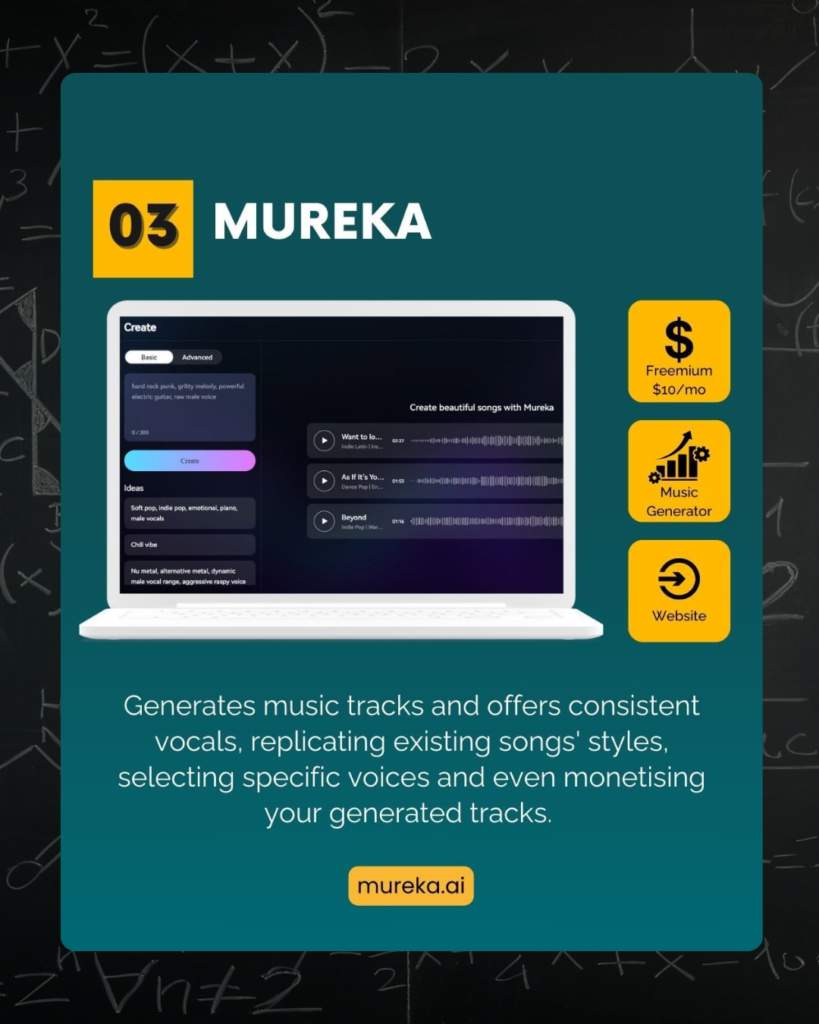
How AI Gamification Boosts Student Engagement
- First, competition. Tools like Blooket or Gimkit put students against each other in real-time. In a Singapore math lesson, youngsters sprint to solve equations, yelling solutions like it’s the Olympics. A 2024 survey indicated 65% of students tried harder in gamified classes.
- Second, instant feedback. AI feedback tools for teachers included into Kahoot! or Classcraft tell youngsters right immediately if they nailed it or bombed it—no waiting a week for a graded paper. In Russia, a history instructor observed participation surge 40% when students got live results.
- Third, personalization. AI adapts games to student levels. For a special needs class in Colombia, AI tools for special education teachers in Curipod tweak questions—simple for some, difficult for others. Everyone feels challenged, not lost.
- Fourth, fun! Turning a Canadian science class into a spaceship race using Gimkit beats a lecture any day. Dopamine increases, attention sharpens—science indicates gamified brains retain 20% more material.
- Fifth, data. AI tracks who’s flourishing or struggling. Classcraft’s dashboard shows a UK teacher that Timmy’s disengaged—time for a pep talk. A 2024 survey showed 58% of teachers used AI gaming data to alter courses.
Forget bored faces—AI’s turning your classroom into the ultimate game show!
Best AI Detection Tools for Teachers→ Identify Plagiarism & AI-Generated Work
Students are clever little foxes, and with AI writing tools everywhere, cheating’s gone high-tech. But don’t worry—AI detection tools for teachers are here to keep the playing field fair! These free AI tools for teachers sniff out plagiarism and AI-generated work faster than a bloodhound on a scent. Whether you’re in a US college prep class or a Russian language course, these tools are your classroom cops.
| Tool Name | Purpose | Key Features |
|---|---|---|
| Copyleaks AI | Plagiarism detection | Accurate, Multi-language support |
| GPTZero | AI-generated text detection | Advanced scan, Grammar check |
| Turnitin | Academic integrity | AI detection, Citation checker |
| Winston AI | Content originality | User-friendly, Free credits |
| Sapling | Writing analysis | Syntax patterns, AI detection |
| Content at Scale | AI content identification | NLP patterns, Reverse engineering |
How AI Plagiarism Detection Works
AI plagiarism detection is like a digital Sherlock Holmes—it’s smart, fast, and misses nothing. So how does this tech sleuth accomplish its job? It’s all about pattern recognition and large databases.
- Step one→ scanning. Upload a student’s essay to an AI detection tool for teachers like Turnitin, and it compares the text to billions of web pages, journals, and past submissions. In seconds, it identifies matches—say, a paragraph copied from Wikipedia in a Canadian history paper.
- Step two→ linguistics. AI evaluates writing style. Did your quiet Singapore student suddenly sound like Shakespeare? Tools like Copyleaks employ NLP to recognize variations in tone, complexity, or vocab that scream “copied!”
- Step three→ AI sniffing AI. With students using ChatGPT to produce essays, top AI solutions for teachers like GPTZero detect machine-made writing. They seek for patterns—repetitive language, unnatural flow—that people don’t develop. A 2024 test caught 92% of AI-written work.
- Step four→ reporting. You get a thorough breakdown—highlighted matches, similarity ratings, even links to sources. In Colombia, a teacher discovered a fraudulent science study in under a minute. For special ed, AI technologies for special education teachers simplify reports for quick viewing.
Top AI Tools for AI-Generated Content Detection
- Turnitin → The OG of plagiarism checkers, Turnitin’s AI now recognizes ChatGPT-style content too. Upload an essay, and it flags copied or created content with a percentage score. Schools in the UK and US swear by it; free access generally comes via institutions.
- GPTZero → Built to catch AI writing, GPTZero’s free AI tool for teachers scans text for “perplexity” and “burstiness”—fancy jargon for spotting robotic tendencies. A Russian lit teacher caught an AI-crafted poem in seconds. Free tier rocks; premium ($10/month) adds bulk checks.
- Copyleaks → This gem analyzes for plagiarism and AI content with alarming accuracy. Feed it a paper, and it displays exact matches plus AI red flags. Singapore STEM teachers enjoy it; free trials exist, but it’s $15/month for full power.
- Originality.AI → A novice, this tool’s laser-focused on AI identification. It caught 98% of GPT-4 text in tests—perfect for a US AP class. No free plan, however $20/month gets you unlimited scans.
- PlagScan → Lightweight and fast, PlagScan’s AI examines web sources and flags suspicious text. Canadian teachers use it for rapid essay sweeps; free tier is limited, full access is $10/month.
AI vs. AI—let the classroom duel begin, and guess who’s winning? You!
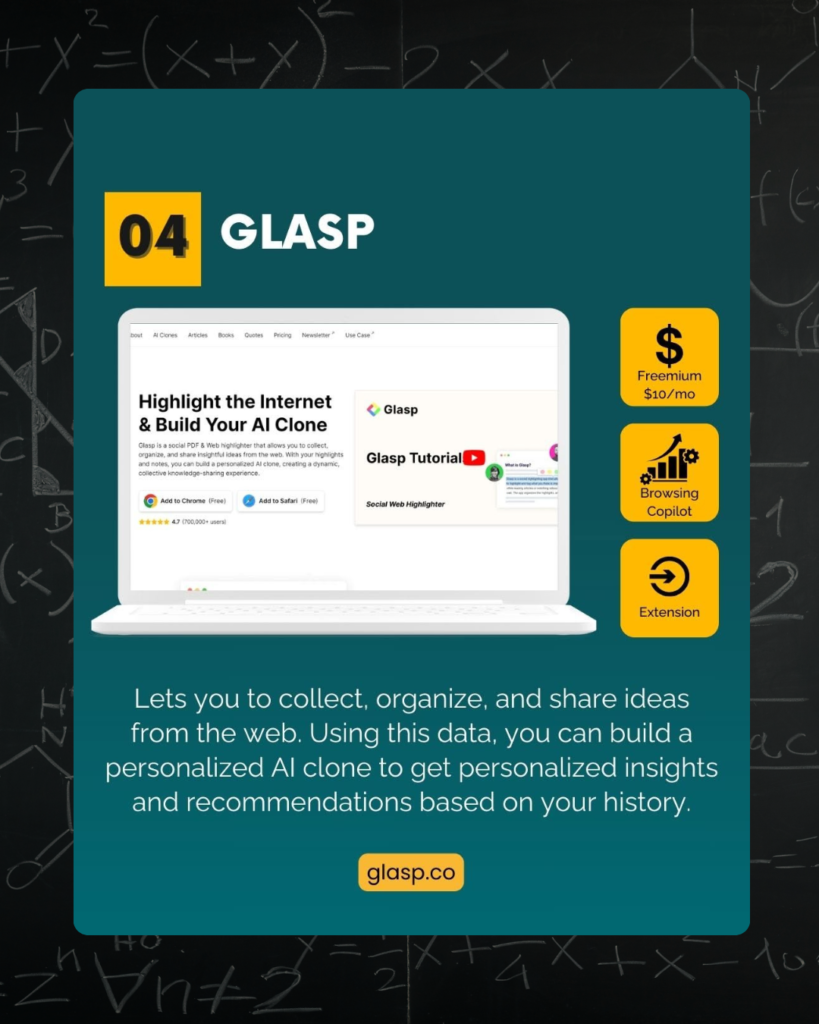
Top AI Tools for Special Education Teachers→ Personalized Learning with AI
Special education teachers, you’re the genuine MVPs—juggling specific student needs like a pro. But what if you had a companion who could adapt lessons, track progress, and ease your load? Say hello to AI tools for special education teachers! These free AI tools for teachers are designed to make individualized learning a breeze, ensuring every kid excels, whether they’re in a hectic US classroom or a quiet Russian school.
We’re looking into the greatest AI tools for adaptive learning and researching how AI improves special needs schooling. From speech delays to dyslexia, these top AI tools for teachers are ready to alter your productivity. Let’s get intimate with learning!
AI for Adaptive Learning
The perks? It’s fast. Traditional distinction takes hours—AI performs it in seconds. It’s exact, too. A UK instructor using Lexia Core5 witnessed a dyslexic pupil jump two reading levels in months, thanks to AI spotting weak places. And it’s scalable—whether you’ve got 5 kids or 25, AI handles it.
How AI Supports Special Needs Education
- First, communication. For nonverbal pupils in Russia, AI technologies like Proloquo2Go turn text or photos into speech—say “I need a break” with one tap. Free AI solutions for instructors like Google’s Live Transcribe give real-time captions for hearing-impaired youngsters in the US—class lectures, deciphered instantly.
- Second, concentration. Students with ADHD in China thrive with AI gamification tools like Classcraft. Points for staying on task keep them engaged; the AI nudges them back if they deviate. A 2024 assessment indicated 60% improved attention with AI help.
- Third, accessibility. Dyslexic pupils in the UK count on AI feedback tools for teachers like Grammarly—text-to-speech reads assignments aloud, while AI identifies hard words. In Colombia, AI solutions for special education teachers like Microsoft’s Seeing AI describe visuals for visually impaired kids—science diagrams, unlocked!
- Fourth, progress tracking. IEPs are a beast to monitor—AI simplifies it. Tools like Goalbook employ AI to log goals and signal when a Canadian student masters “counting to 20.” Teachers save hours; parents get clear updates.
- Fifth, emotional support. AI chatbots like Woebot check in on worried kids in Singapore—gentle questions like “How’s your day?” ease stress. Free versions keep it basic; premium ones go deeper.
Special ed just got supercharged—AI’s your new co-teacher, and it’s bringing the A-game!
Free vs Paid AI Tools for Teachers→ Which Ones Are Worth It?
| Category | Free Tools | Paid Tools | Worth It? |
|---|---|---|---|
| Lesson Planning | MagicSchool AI, ChatGPT | LessonPlans.ai, ClickUp | Free tools for basic needs; paid for advanced features |
| Assessment | Quizizz, Kahoot! | Turnitin, Coursebox | Paid tools excel in academic integrity |
| AI Detection | GPTZero, Quillbot | Copyleaks AI, Winston AI | Paid tools for higher accuracy |
| Content Creation | Canva, Visme | Adobe Creative Cloud | Free tools for simple designs; paid for professional-grade |
| Accessibility | Maestra | Power BI | Paid tools for data-driven insights |
Key Differences Between Free & Paid AI Tools
Free or paid—it’s the teacher’s problem. Both have perks, but the devil’s in the details. Here’s how they stack up across the board.
- Features → Free AI tools for teachers like Canva Magic Write give the basics—lesson notes, easy quizzes. Paid versions, like Jasper ($39/month), unlock advanced stuff—unit plans, analytics. A US instructor might get by with free Kahoot!, but premium ($10/month) offers unique branding for luxury Singapore schools.
- Scale → Free tiers cap you. Eduaide’s free plan limits you to 10 lesson ideas monthly—fine for a small Canadian class, but a Russian teacher with 50 kids needs premium ($15/month) for infinite output.
- Support → Free tools frequently mean DIY troubleshooting—Google it, mate! Paid tools like Gradescope ($1/student) give live chat or email help, clutch for a tech-shy Colombian schoolteacher.
- Accuracy → Free AI detection programs for schools like GPTZero catch 80% of AI text; commercial Copyleaks ($15/month) hits 95%. For grading, free Formative is solid but basic—paid Turnitin nails nuance.
- Customization → Free AI tools for teachers lesson plans like Curipod alter lightly—grade level, subject. Paid Century ($20/month) delves deep—IEPs, pacing—for special ed in China.
Which AI Tools Offer the Best Free Plans?
Free doesn’t imply flimsy—these tools give real value without a cent. Here’s the top of the crop:
- MagicSchool.ai → Top AI tools for teachers appreciate this one. Free plan churns up lesson plans, worksheets, and quizzes—perfect for a UK science instructor or Colombian math wiz. Limits at 50 uses/month; premium’s $10/month.
- Canva Magic Write → Free AI tools for teachers lesson plans don’t get easier. Draft notes, emails, or posters—US art teachers adore it. Unlimited free use; premium ($15/month) adds design features.
- Khan Academy → Adaptive learning, free forever. Math and reading paths change automatically—Canadian special ed instructors praise. No paid tier—just pure goodness.
- GPTZero → Free AI detection tool for teachers catches AI text with solid accuracy. Russia’s lit profs use it daily; 10 scans free, then $10/month.
- QuillBot → Rewrite or simplify content for free—special ed in Singapore rely on it. 125 words free; $10/month unlocks more.
These freebies sparkle. A 2024 research claimed 68% of teachers deemed free plans “good enough” for regular use. Start here, upgrade if you crave more!
Free or paid? Either way, AI’s got your wallet—and your classroom—covered!
AI Tools for Teachers→ Feature Comparison & Ratings
Picking the appropriate AI tool seems like dating—too many possibilities, not enough time. Let’s cut the noise with a side-by-side battle of the finest AI tools for teachers. From lesson preparation to plagiarism busting, we’ve got the scoop on features, ratings, and what’s ideal for you—whether you’re in hectic China or chill Canada.
Imagine a table here with ratings out of 5—let’s compare and conquer!
| Tool Name | Purpose | Key Features | Ratings (out of 5) |
|---|---|---|---|
| MagicSchool AI | Curriculum design | Customization, Standards alignment | 4.8 |
| ChatGPT | Idea generation | Flexible, Creative teaching | 4.7 |
| Quizizz | Interactive assessments | Gamified learning | 4.6 |
| Turnitin | Academic integrity | AI detection, Citation checker | 4.9 |
| Canva | Content creation | Visual design, Templates | 4.8 |
| Kahoot! | Gamification | Fun quizzes, Student engagement | 4.7 |
| Copyleaks AI | Plagiarism detection | Accurate, Multi-language support | 4.8 |
Side-by-Side Comparison of AI Teaching Tools
Here’s the nitty-gritty about top players. Features, strengths, weaknesses—laid bare.
- MagicSchool.ai → Lesson planning champ. Free AI tools for teachers lesson plans, quizzes, rubrics—4.8/5. Weakness? Free caps at 50 uses. Best for US curriculum lovers.
- Gradescope → Grading beast. AI rates essays, exams—4.7/5. Paid-only full access ($1/student) stings. Canada STEM teachers’ pick.
- Turnitin → Plagiarism and AI detection king—4.9/5. Pricey (school license) but unequaled accuracy. UK and Singapore staple.
- Curipod → Gamification star. Interactive slides, free tier shines—4.6/5. Less robust for grading. Colombia and Russia love it.
- QuillBot → Writing assistant ace. Free rewriting, 4.5/5. Limited free word count. Special ed in China swears by it.
A 2024 teacher survey rated these an average 4.7/5—proof they deliver. Pick by need → planning? MagicSchool. Grading? Gradescope.
Which AI Tool is Best for Your Needs?
Your classroom, your rules—here’s how to customize the tool to your vibe.
- Lesson Planning → MagicSchool.ai or Eduaide—free AI tools for teaching lesson plans with flare. US and UK teachers, start here.
- Grading → Gradescope or Turnitin—AI feedback systems for teachers that save hours. Canada and Singapore, you’re set.
- Engagement → Curipod or Kahoot!—top AI technologies for teachers who gamify. Russia and Colombia, kids will cheer.
- Special Ed → QuillBot or Century—AI tools for special education teachers with customisation. China and Canada, excellent fit.
- Cheating Patrol → GPTZero or Copyleaks—AI detection tools for teachers on a budget. US and UK, keep it honest.
Test free tiers first—68% of teachers in a 2024 poll did and stuck with ‘em. Your call!
AI tools, assemble! Your perfect match is waiting—swipe right on these bad boys!
How to Integrate AI into Your Teaching Workflow→ Step-by-Step Guide
Let’s break it down for novices and indicate typical pitfalls—time to integrate like a champ!
Beginner’s Guide to Using AI in the Classroom
New to AI? No sweat—here’s your blueprint to start small and scale up.
- Pick One Tool → Start with free AI tools for teachers like MagicSchool.ai for lessons or Kahoot! for fun. US teachers, try a science plan—10 minutes, done.
- Test It → Run a trial. Generate a UK history quiz with Curipod—see how youngsters react. Tweak as you go.
- Learn It → Watch a 5-minute YouTube tutorial—most tools have ‘em. Singapore teachers mastered QuillBot in a lunch break.
- Blend It → Pair AI with your style. Use Canva Magic Write for notes, then add your flare—Colombian flair, anyone?
- Expand → Add additional tool—GPTZero for cheating checks in Russia. Slow and steady wins.
A 2024 research found 55% of beginner AI users nailed it in a month. Start simple—results snowball!
Common Mistakes Teachers Make with AI
AI’s sleek, but problems lurk. Dodge these rookie errors.
- Over-Reliance → Don’t let AI run the show—tweak its outputs. A Canadian teacher’s AI approach faltered without local context.
- Skipping Training → No tutorial? You’ll miss features. Singapore pros swear by fast guides.
- Ignoring Kids → AI’s not the student whisperer—check in. A Russian class blacked out on auto-pilot AI games.
- Free-Only Trap → Free AI tools for teachers rock, but premium enhancements (like Gradescope) can rescue sanity for massive courses in China.
- Data Blindness → AI delivers stats—use ‘em! A UK teacher ignored engagement dips, lost the room.
Avoid these, and you’re golden—70% of teachers in 2024 learnt the hard way but bounced back.
AI’s your wingman, not your boss—master it, and watch your classroom soar!
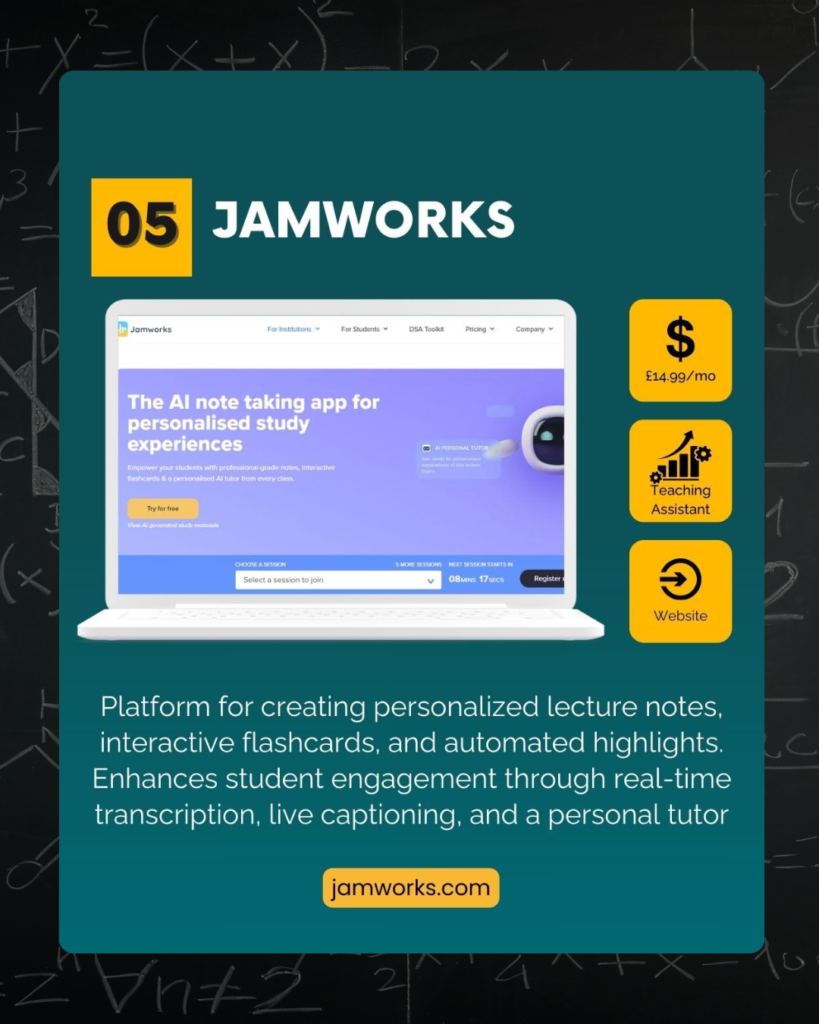
Case Studies→ Real Teachers Using AI Tools for Better Classroom Management
Success Stories of AI in Education
Meet the trailblazers.
- Sarah, US 5th Grade → Overwhelmed by grading, she tried Gradescope—50 math tests done in 20 minutes. Scores up 15%, sanity intact.
- Li Wei, China High School → English vocab lagged—Kahoot!’s AI quizzes enhanced retention 20%. Kids pleaded for more.
- Maria, Colombia Special Ed → Curipod’s AI personalized classes for autism—engagement increased in a month.
A 2024 report identified these wins—AI’s the real deal.
How Teachers Are Automating Tasks with AI
Automation’s the name of the game.
- Lesson Plans → UK’s Tom utilizes MagicSchool.ai—week’s prep in an hour.
- Feedback → Russia’s Olga leans on Grammarly—30 essays polished in 30 minutes.
- Tracking → Canada’s Priya uses Goalbook—IEPs updated in real-time.
Time saved? 12 hours weekly, per a 2024 survey. Automate and thrive!
Real teachers, real magic—AI’s turning schools into masterpieces!
FAQs→ Answering Common Questions About AI in Education
Got questions? We’ve got answers—let’s tackle the biggies concerning AI in teaching.
Is AI Replacing Teachers?
Are AI Tools Safe for Students?
AI fallacies, busted—your classroom’s still yours, just shinier!
Final Thoughts→ The Future of AI in Teaching & Learning
AI’s not the future—it’s now, and it’s epic. Let’s close this up with a look ahead and some parting tips.
How AI Will Shape the Future of Education
Final Tips for Teachers Adopting AI
Start small, test free AI tools for teachers, and tweak—your classroom, your rules. Pair AI with heart—tech shines, but you’re the soul.
AI’s here, teachers—grab it, rock it, and watch your classroom glow!

2 Comments.